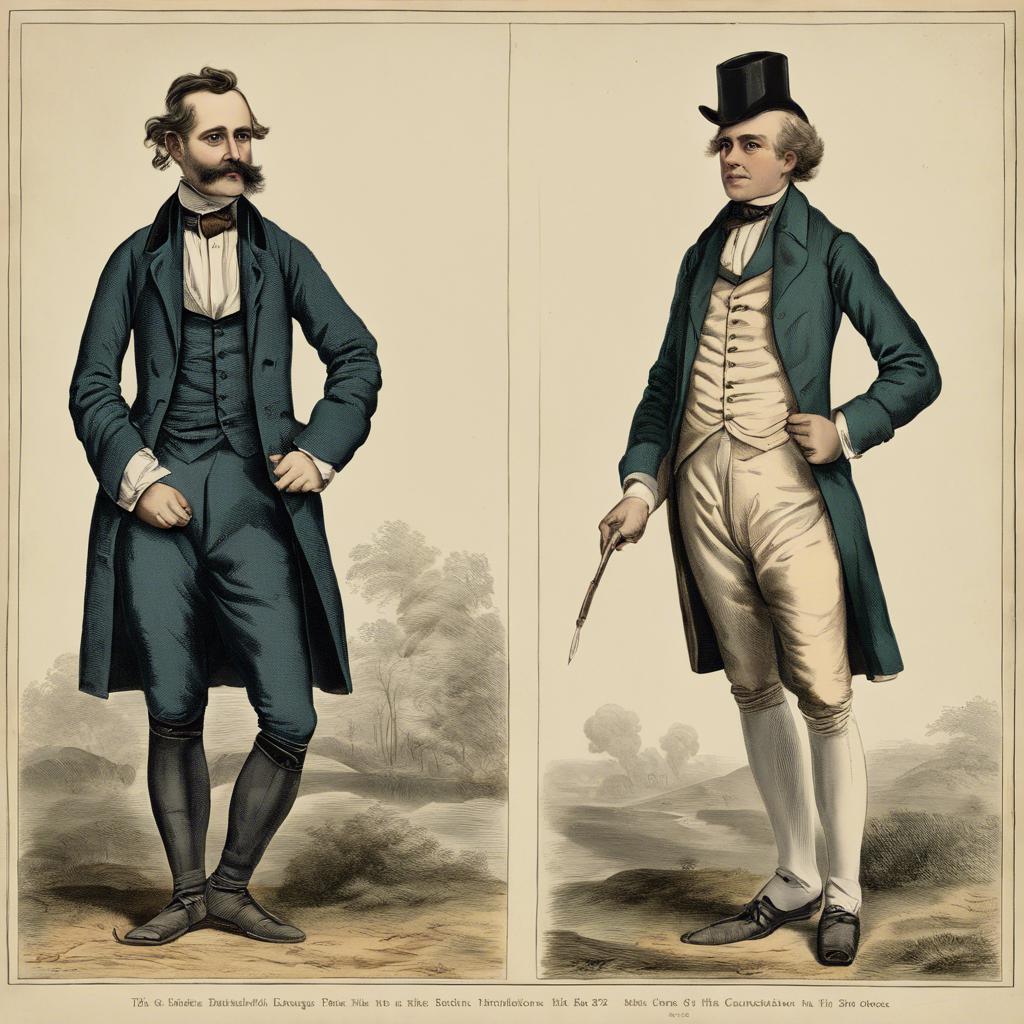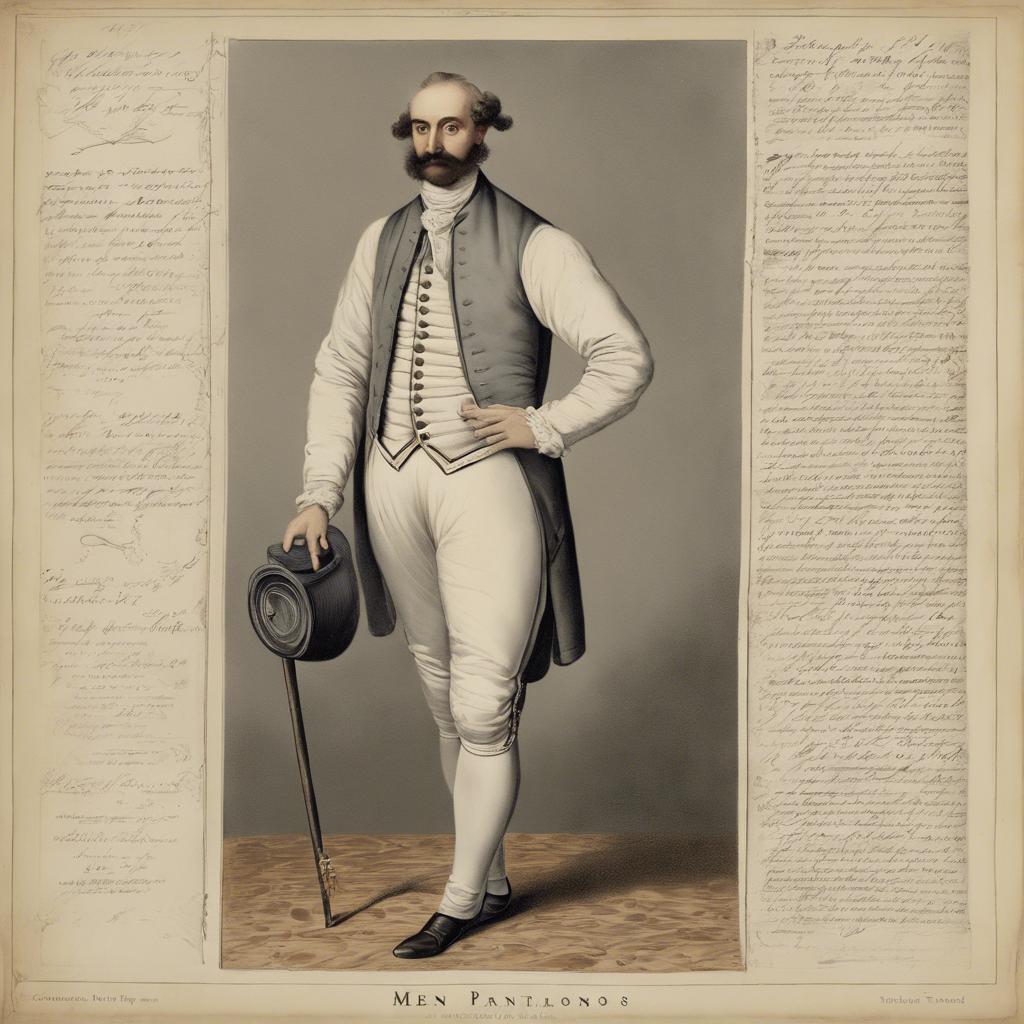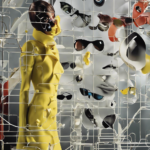In the early 19th century, men’s fashion underwent significant transformations, particularly in the realm of trousers. The pantaloons of the 1800s were not simply a utilitarian garment, but a reflection of societal norms and cultural shifts. Through a historical lens, this article explores the evolution of men’s pantaloons in the 1800s, shedding light on their significance and impact on the fashion landscape of the time.
Step Into the World of Cheryl Bolen
Dive into the enchanting stories of love, intrigue, and elegance set in the Regency Era. Cheryl Bolen's novels offer timeless romance and captivating tales that will leave you wanting more.
Explore Cheryl Bolen's Books Now
Evolution of Mens Pantaloons in the 1800s
Evolution of Men’s Pantaloons in the 1800s
During the 1800s, men’s pantaloons underwent significant changes in both style and functionality. These trousers, which were typically high-waisted and fitted snugly from the waist to the knee, reflected the fashion trends of the time.
Key developments in men’s pantaloons during the 1800s included:
- Tighter fit: Pantaloons became more form-fitting, emphasizing the shape of the leg.
- Introduction of pockets: Pockets became a common feature, allowing men to carry small items with them.
- Evolution of materials: The use of different fabrics such as wool and cotton became more prevalent, depending on the occasion and season.
| Year | Style |
|---|---|
| 1800 | Loose and flowy |
| 1820 | Tighter and more structured |
| 1850 | High-waisted and form-fitting |
the evolution of men’s pantaloons in the 1800s reflected changing attitudes towards fashion, comfort, and practicality. These trousers played a pivotal role in shaping men’s wardrobes during this period, setting the stage for future innovations in men’s fashion.
Key Characteristics of Mens Pantaloons in the 19th Century
The 19th century saw a rise in the popularity of men’s pantaloons, which were a style of trousers that typically reached the ankle and were often made of lightweight materials such as linen or cotton. These pantaloons were known for their snug fit, with a close-cut leg that provided a sleek and tailored look. Men of all social classes embraced this style, from working-class laborers to upper-class gentlemen.
One key characteristic of men’s pantaloons in the 1800s was the use of high-waisted designs, which accentuated the natural waistline of the wearer. This style was often paired with a matching waistcoat and tailored coat, creating a coordinated and polished ensemble. The slim fit of pantaloons allowed for ease of movement, making them a practical choice for everyday wear.
In terms of colors and patterns, men’s pantaloons in the 19th century were often seen in neutral tones such as black, brown, and grey. Stripes and checks were popular choices for adding a touch of flair to the garment. Accessories such as suspenders or a pocket watch were commonly paired with pantaloons to complete the outfit and add a touch of personal style.
Fashion Influences on Mens Pantaloons During the Regency Era
During the Regency Era, men’s pantaloons underwent significant fashion influences that shaped their style and design. One notable trend was the adoption of tighter-fitting pants, which replaced the looser breeches commonly worn in previous eras. This shift towards a more form-fitting silhouette was influenced by the classical revival in art and fashion, reflecting a desire for simplicity and elegance.
Another key influence on men’s pantaloons during the Regency Era was the introduction of high waistlines. This style choice not only elongated the legs but also accentuated the torso, creating a more streamlined and sophisticated look. High-waisted pantaloons were often paired with tailored coats and waistcoats, creating a cohesive ensemble that epitomized the dapper gentleman of the time.
In addition to tighter fits and high waistlines, men’s pantaloons during the Regency Era were also characterized by a variety of fabric choices. While traditional wool was still a popular option, lighter materials such as linen and cotton became increasingly fashionable for warmer weather. These breathable fabrics not only provided comfort but also added a touch of refinement to men’s wardrobes, making pantaloons a versatile and stylish choice for a range of occasions.
Tips for Replicating an Authentic 1800s Mens Pantaloons Look
In order to replicate an authentic 1800s mens pantaloons look, it is essential to pay attention to the materials used. Opt for natural fabrics such as linen or cotton, which were commonly used during that time period.
When it comes to styling, keep in mind that pantaloons in the 1800s were typically high-waisted and loose-fitting, with a tapered leg. Pair them with a crisp white shirt and a vest for a classic look. Accessorize with a top hat and a pocket watch to complete the ensemble.
For the finishing touches, consider adding details such as buttons or embroidery to the pantaloons for a more authentic feel. Pay attention to the length of the pantaloons, as they were often worn with socks or stockings to complete the look.
Future Outlook
men’s pantaloons in the 1800s were a crucial component of men’s fashion during that era, showcasing the evolving styles and trends of the time. These form-fitting trousers not only reflected the societal norms and influences of the period but also provided gentlemen with a sense of sophistication and elegance. As we look back on this iconic piece of men’s attire, we can appreciate the craftsmanship and attention to detail that went into creating these fashionable garments. The legacy of men’s pantaloons from the 1800s continues to inspire modern fashion trends and serves as a reminder of the timeless elegance of historical menswear.


